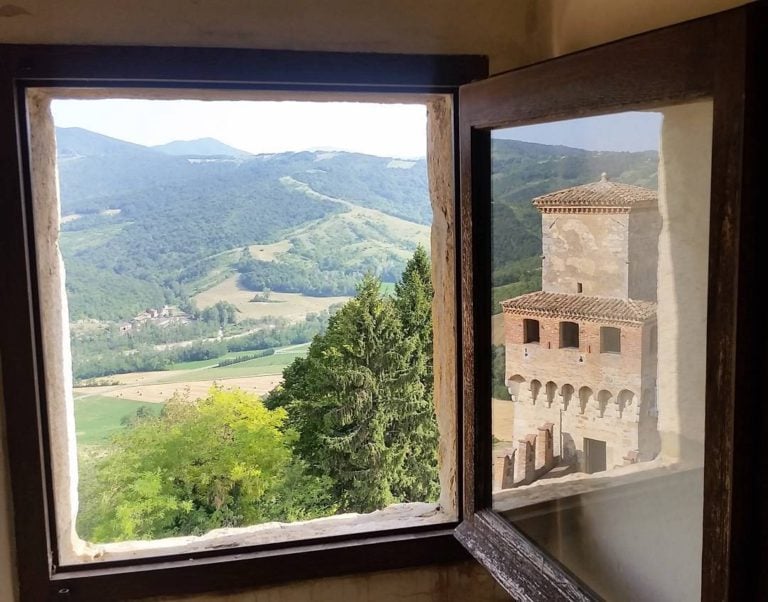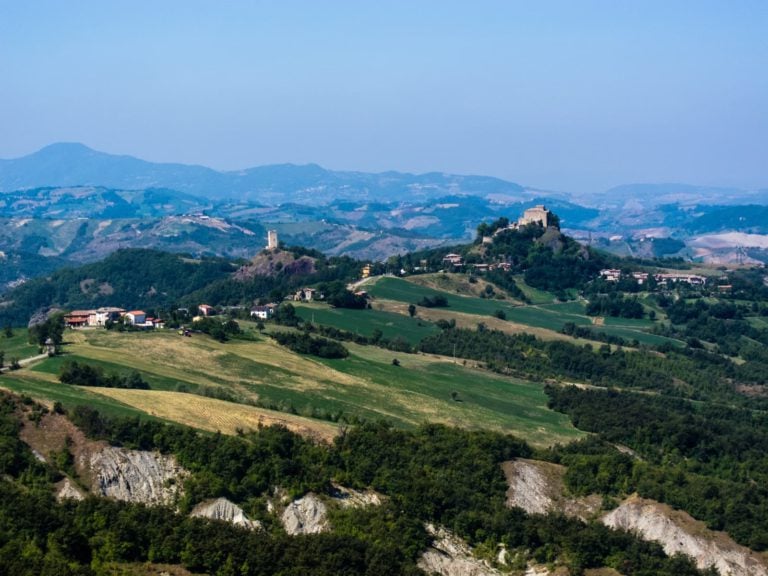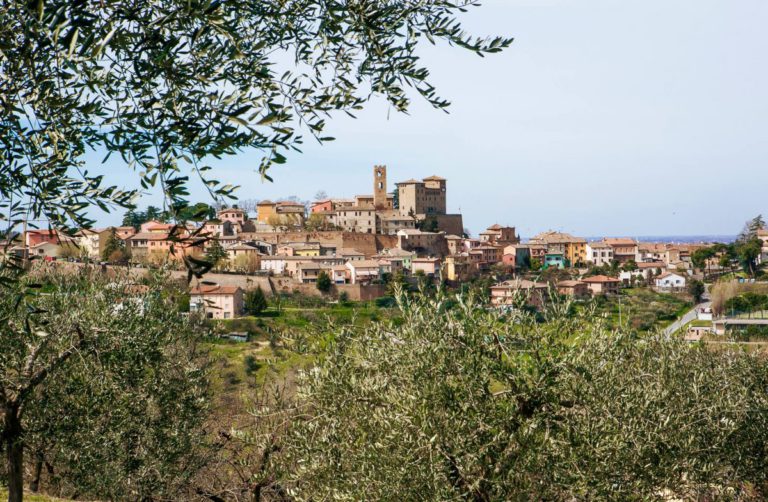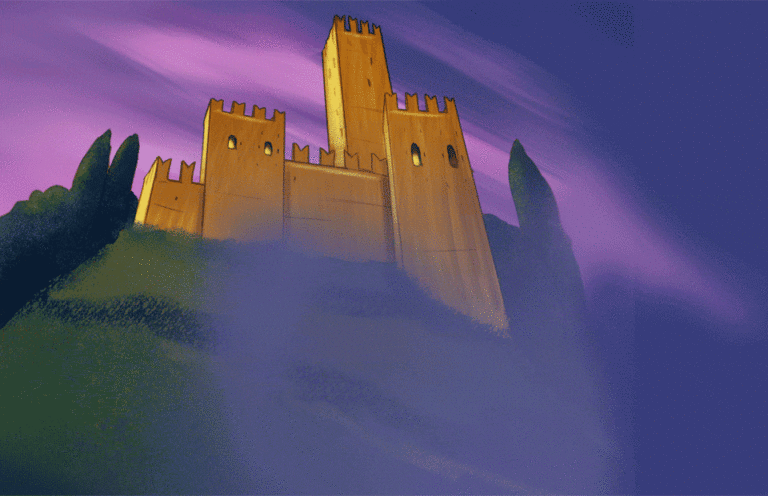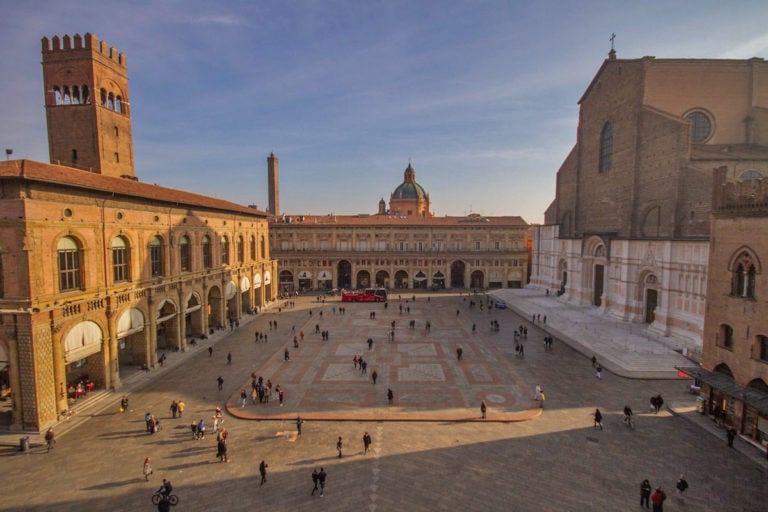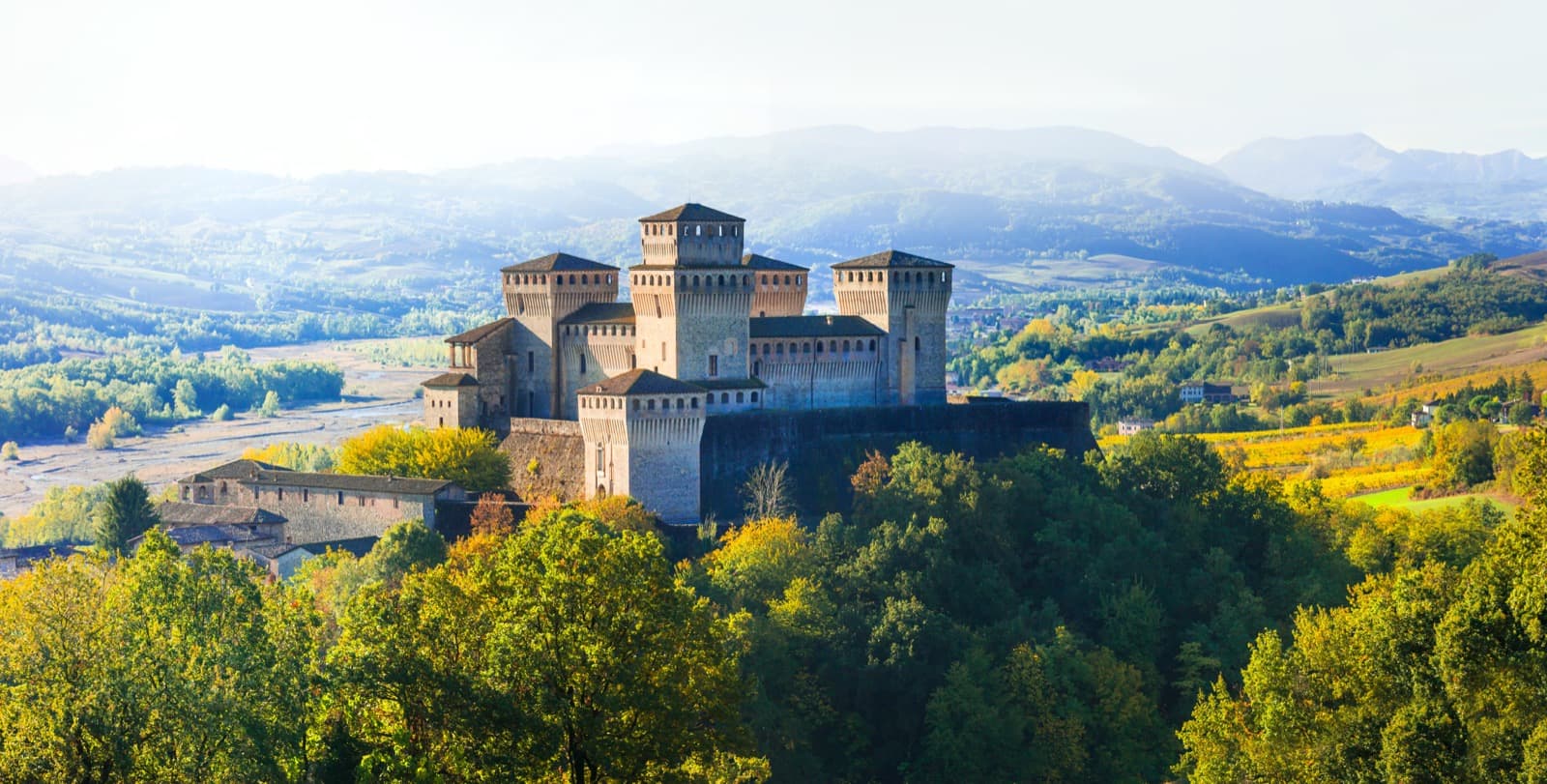These old castles are alive with medieval and Renaissance mystique. They testify to a past seasoned with splendour and decadence, intrigue and struggles for power. Despite all the time that has passed and all the events they have seen, their charm is very much intact. They are pieces of history.
In this itinerary we take you to Modena province, from the plain to the Apennines, to explore some castles and forts with fascinating stories to tell; all you have to do is listen.
1 - CASTELLO DELLE ROCCHE, FINALE EMILIA
Castello delle Rocche, the symbolic monument of Finale Emilia, still retains its original 15th-century layout.
It was built in 1402 for Nicolò III d’Este by Bartolino Ploti, also the architect of Ferrara and Mantova castles (1385 and 1395, respectively).
It was surrounded by a moat on three sides, while the river provided a natural line of defence on the fourth. In 1425, Giovanni da Siena converted it into a residence for the Este family, knocking down part of the crenelated courtyards to create an exquisite three-level loggia, while the interiors were decorated with frescoes. He also built an elegant entrance by water from the east. Acquired by the city council in 1864, the castle underwent a series of major restoration and preservation works from 1896.
Until the mid 20th century, the castle housed the local gaol, but an ambitious new project began in the 1980s to return the building to public use. In parallel with the restoration work, archaeologists made a number of precious finds that are now on display inside the castle in the Civic Museums.
The structure was badly damaged by an earthquake in May 2012; access to the castle is currently forbidden for restoration.
2 - SAN FELICE SUL PANARO CASTLE
Standing proudly in the main square, the hub of San Felice sul Panaro’s historic centre, the castle and its four towers have always been the town’s signature sight. The edifice was shaped by the Este dynasty: Obizzo III d’Este built it in 1340, and in 1406 Nicolò III d’Este had it restored by architect Bartolino Ploti, who was also behind Castello delle Rocche in Finale Emilia.
Sadly, the 2012 earthquake damaged it badly, and you can no longer go inside; that said, the castle is still standing, and its imposing presence and impressive structure are well worth admiring on a stroll around outside.
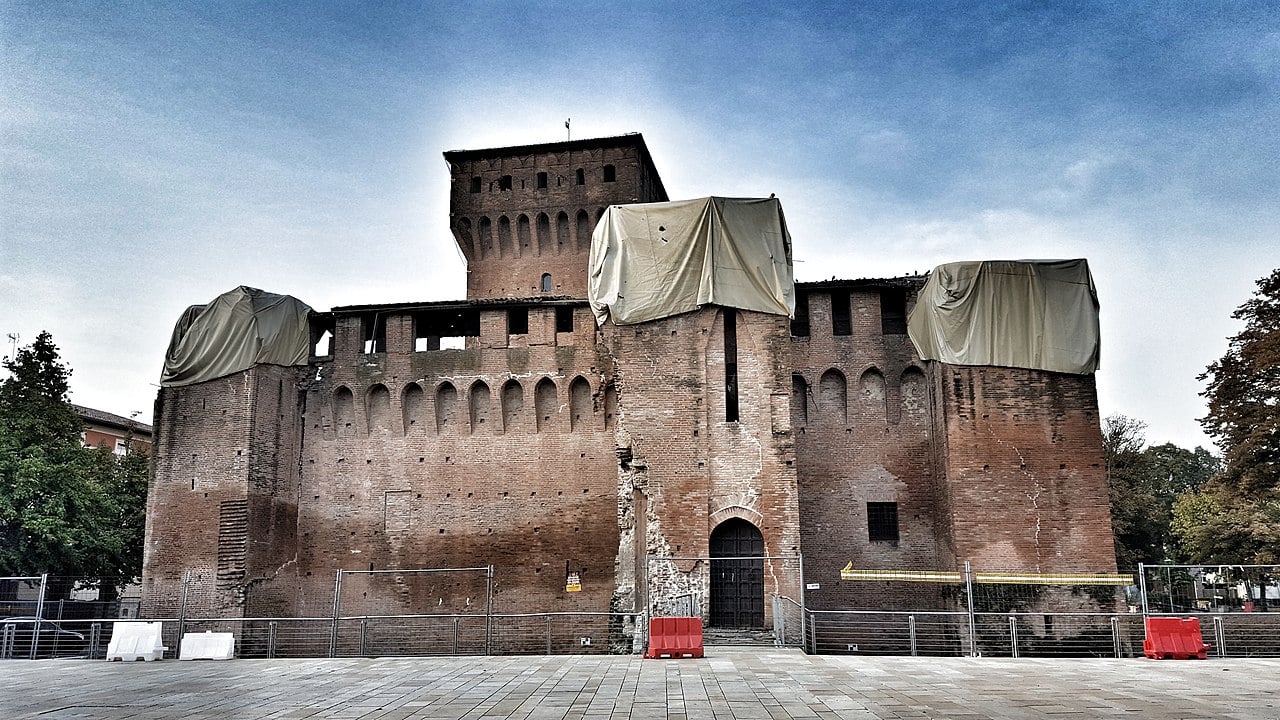
Estense Castle of San Felice Sul Panaro (MO) | Ph. Giorgio Bocchi
3 - PICO CASTLE, MIRANDOLA
Mirandola had been a small fortified settlement since the 11th century when the Pico family took possession of the town in 1311. They gradually enlarged and strengthened the castle over several centuries until it became one of the most important in the Po valley. The town itself became octagonal in plan, as modern maps still show.
In the early 18th century, the town and its castle were the theatre for events that marked the end of the Pico dynasty, supplanted by the Estes. Much of the complex was badly damaged on 11 June 1714 when a tower exploded, as a lightning strike ignited the gunpowder store inside.
Then, just 6 years after it was restored as a leading cultural centre – with an auditorium, Civic Museum and other amenities – the castle sustained a further blow with the earthquake of May 2012. Now closed to the public, it remains a fine sight, dominating the south-eastern side of Piazza Costituente.
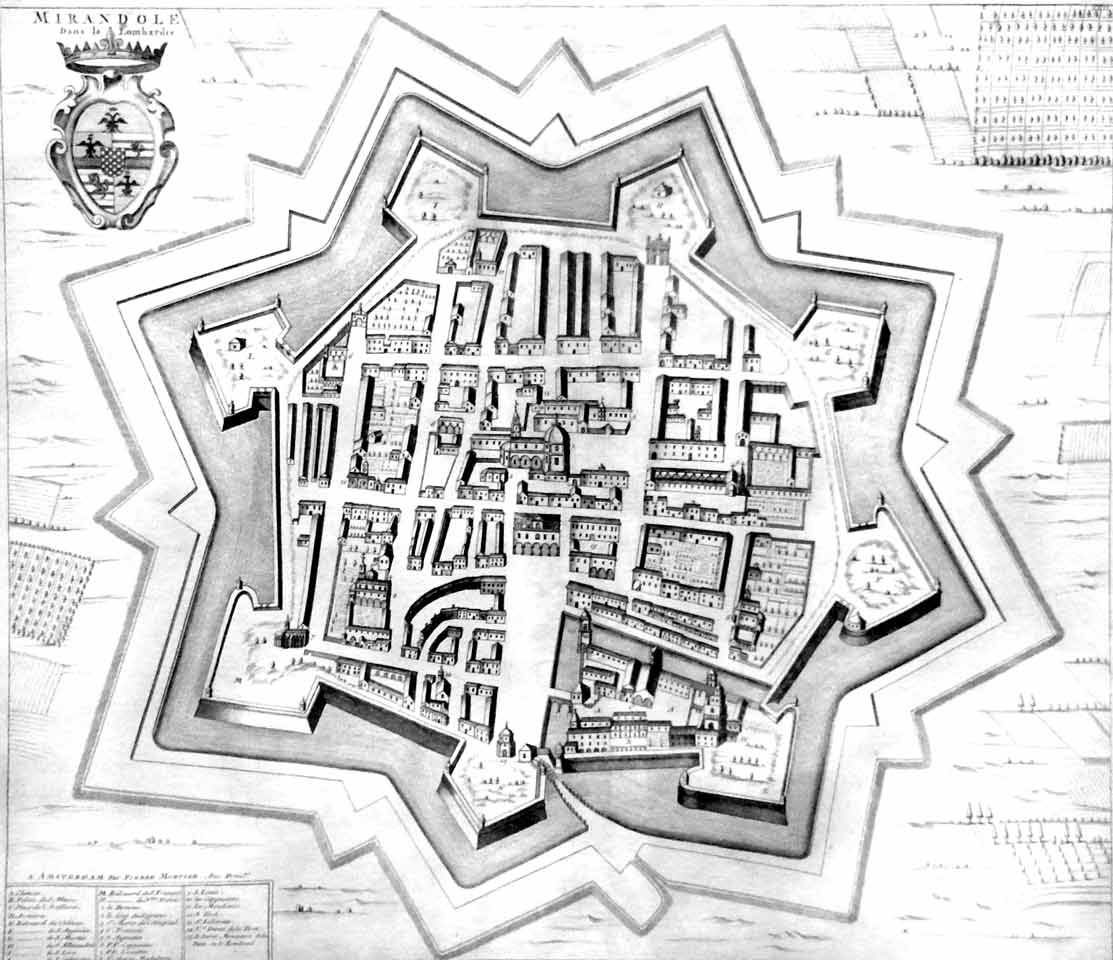
View of Mirandola in an engraving by Pier Mortier published in the Nouveau Theater de l’Italie (Amsterdam, 1704) via Wikipedia
4 - CARPI CASTLE
Palazzo dei Pio, known locally as the Castle, stands at the historic heart of Carpi in Piazza dei Martiri. The square is famous as one of Italy’s largest, spanning a full 16,000 sqm. Starting as a cluster of smaller buildings, some dating back to the 14th century, the castle developed over time into a proper Renaissance palace.
Its transformation into a regal residence was completed in the early 1500s, as Prince Alberto III Pio gave it a unity and coherence in line with Renaissance principles. It became a court around the majestic, Bramante-inspired Court of Honour, which leads to inner rooms decorated with sumptuous frescoes from the 15th and 16th centuries.
The castle now offers three fascinating collections for visitors to explore:
- the Castle Museum,
- the City Museum,
- the Museum and Monument to Deportees.
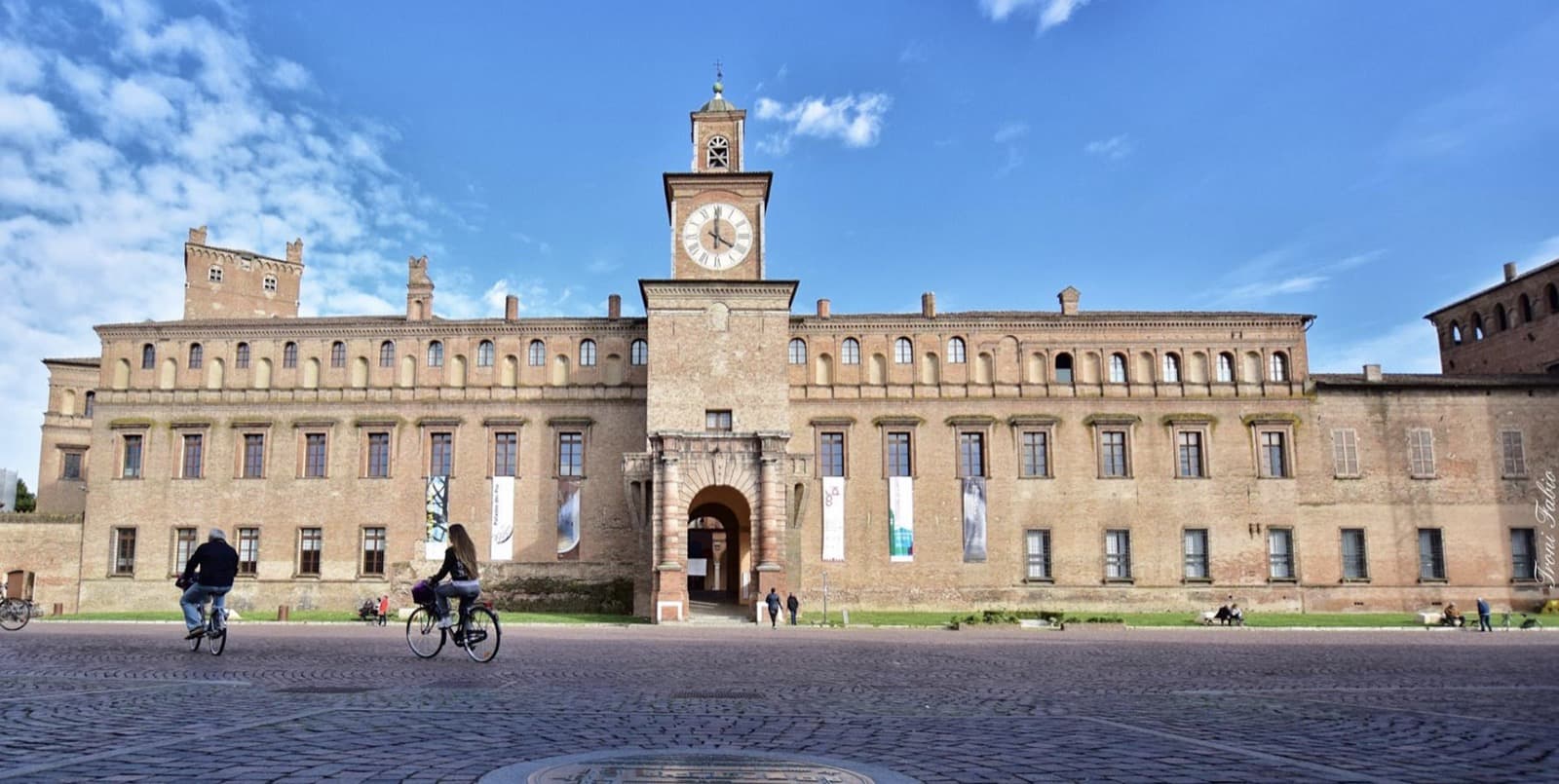
Palazzo dei Pio, Carpi (MO) | Ph. Fabio Troni
5 - CAMPORI CASTLE, SOLIERA
The urban fabric of Soliera is dominated by Campori Castle, in Piazza Fratelli Sassi. The Este family built it as a defensive fortification in the 12th century.
The structure was gradually transformed from a spartan fortress into a noble residence, extended and reinforced in the 14th and 15th centuries by the various lords who lived there. Being near Modena to the south and Carpi to the north-east, the castle’s prime location sparked a prolonged tug-of-war to possess it between the Este and the Pio dynasties. Both ultimately lost out when it became a marquisate and was given to the Campori family (hence the name), who owned it from 1635 until 1976, when the parish of Soliera took over. Finally, the town council bought it in 1990 and gave it a full restoration.
The building is a fine piece of architecture. Besides the pair of 15th-century keeps and the Campori coats of arms painted over the entrance arch, the most sublime decorations are 18th-century, with the Venetian floors and the elegant gallery bedecked with stuccos of mythical scenes.
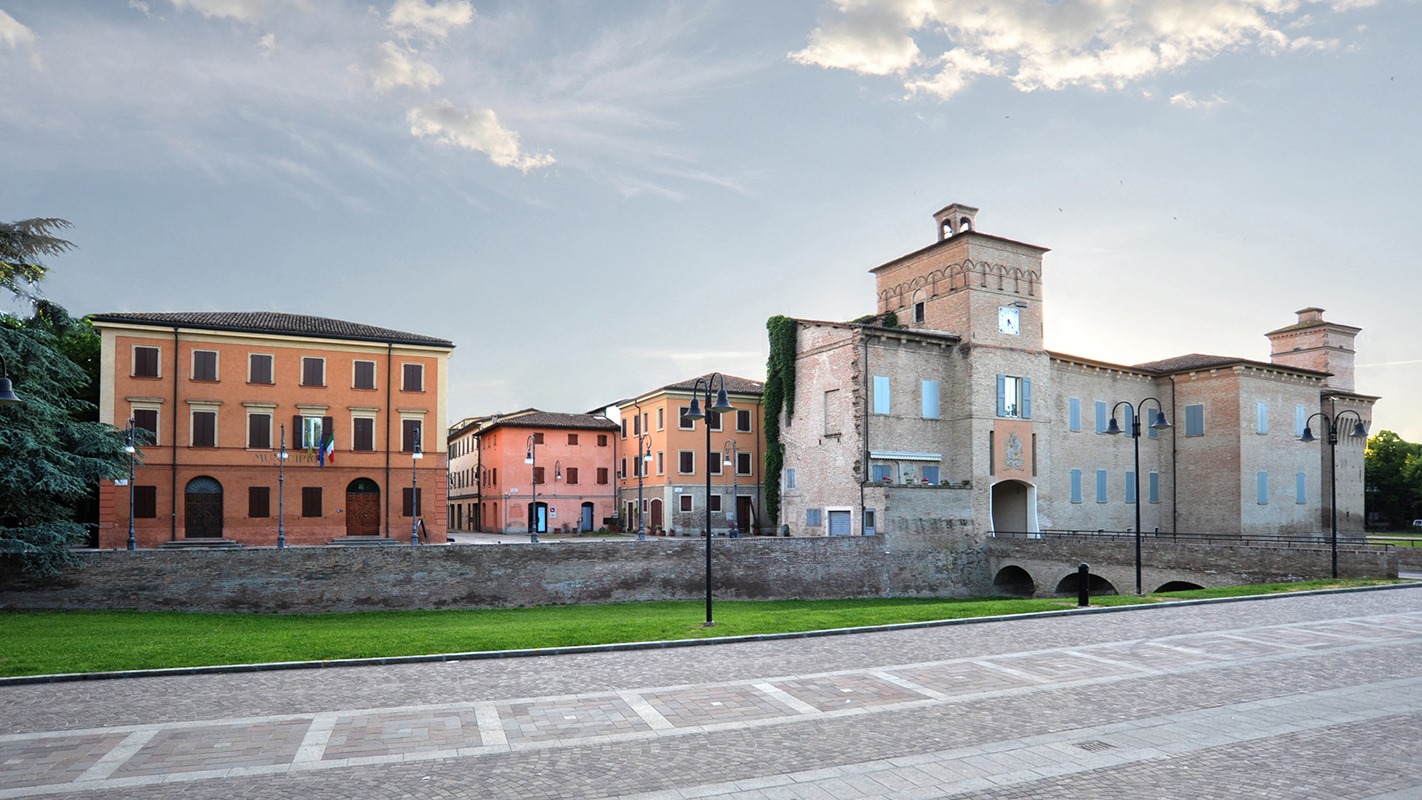
Campori Castle, Soliera (MO) | Ph. Comune Modena
6 - FORMIGINE CASTLE
The past is alive and well in Formigine. Its most breathtaking historic and cultural gem is undoubtedly the Castle in the town centre.
Instead of this majestic fortress, 10th-century passers-by would have seen a church dedicated to St Bartholomew. The castle’s current form, with a marquess’ palace and sweeping garden within a curtain wall bolstered by four angular towers and a guard house, dates back to the 1400s. Some of the decoration from that period still survives, including the Pio coats of arms in the clock tower and the fresco Our Lady of the Castle inside the palace.
In 1946, the town council bought the building as its office and to repair the WW2 bomb damage. After a major restoration, completed in 2007, the castle is a magnificent time capsule of eras, events and important people from the Middle Ages to the present day.
This remarkable journey through history comes to life in the Castle Museum. Here, interactive multimedia installations by Studio Azzurro – a major art research centre in Milan – link to the historical and archaeological research led by the prestigious Ca’ Foscari University in Venice to tell the story of the people, places and objects of the past in a fresh and fascinating style.
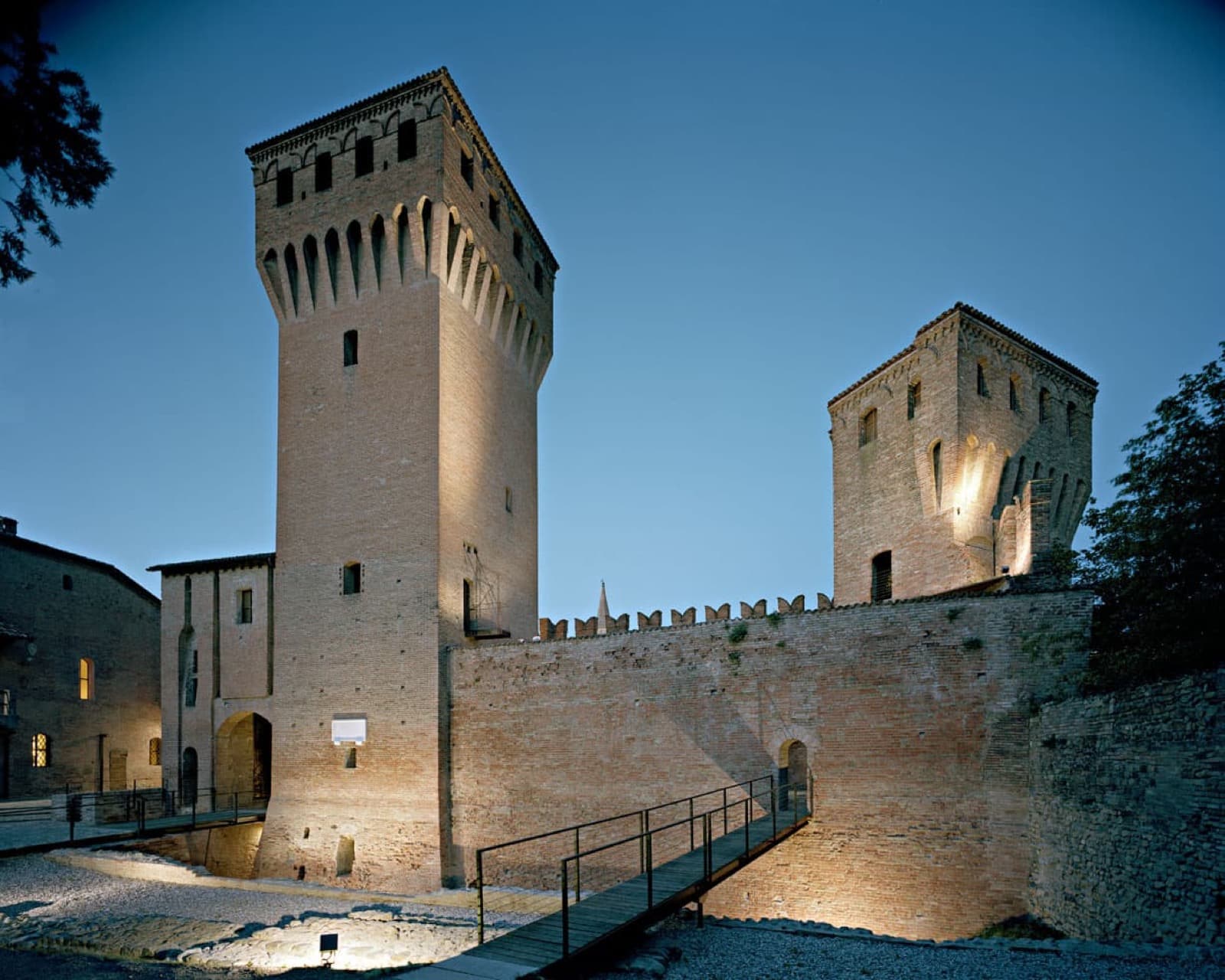
Castle of Formigine (MO) | Ph. Alberto Lagomaggiore
7 - RANGONI CASTLE, SPILAMBERTO
The castle is still very much the most important monument in Spilamberto. It stands on an earlier fortification – a sturdy tower at the heart of a 13th-century castle built by the city of Modena to resist the Bolognese.
The structure assumed a regular rectangular form with towers, battlements and murder holes only in 1353, when it was given to the Rangoni family, who became its feudal lords.
The building originally faced the river, where the main entrance was, and traces of the original drawbridge and curtain walls still remain. The castle was the home of Niccolò Rangoni, Lord of Spilamberto from 1468 to 1500 and husband of Bianca Bentivoglio. Later generations of Rangonis turned it from a military stronghold into a noble residence. This was the castle’s heyday, a Pretty Palace with splendid decoration and paintings inside, outside and in the courtyard.
With its position near the hills and the River Panaro, it was a perfect location for sumptuous celebrations, attracting many illustrious guests for its healthy climate and the delights that the area still offers today. Owned by the local council since 2005, the castle has been restored and opened to the public (but do check the opening times before travelling).
8 - VIGNOLA CASTLE
The name Vignola comes from the Latin “vineola” or little vineyard. And when you visit, you can see why; the vine even appears in the town banner. The castle’s origins are shrouded in mystery, although its walls and towers were probably constructed after the Carolingian dynasty to protect the settlements from Hungarian invasion.
The building’s role was military until 1401, when Ferrara aristocrat Uguccione Contrari was given the fiefdom by the Lord of Ferrara, Nicolò III d’Este. Over the next 20 years, the castle was transformed into a sumptuous frescoed residence.
When the Contrari dynasty died out, it was taken over by the Boncompagni in 1577. By the 19th century, the castle housed the town hall, the municipal library and the bank – the Cassa di Risparmio di Vignola, which acquired ownership in 1965 before transferring it to the Vignola Foundation in 1998.
Lately, decades of meticulous restoration have returned the entire building to its former artistic and architectural glory. The frescoed rooms from the 1400s on the lower two floors show the Contrari family’s close alliance with the House of Este.
The castle chapel offers an exquisite cycle of late-Gothic frescoes commissioned by Uguccione Contrari. The paintings depict the life of Christ and are attributed to the Master of Vignola, a leading figure on the Emilian art scene of the early 15th century whose name remains unknown. Also well worth seeing are the Armiger rooms, the panoramic walkways and the three towers, known respectively as Nonantola tower, the Women’s tower, and the Paintbrush tower.
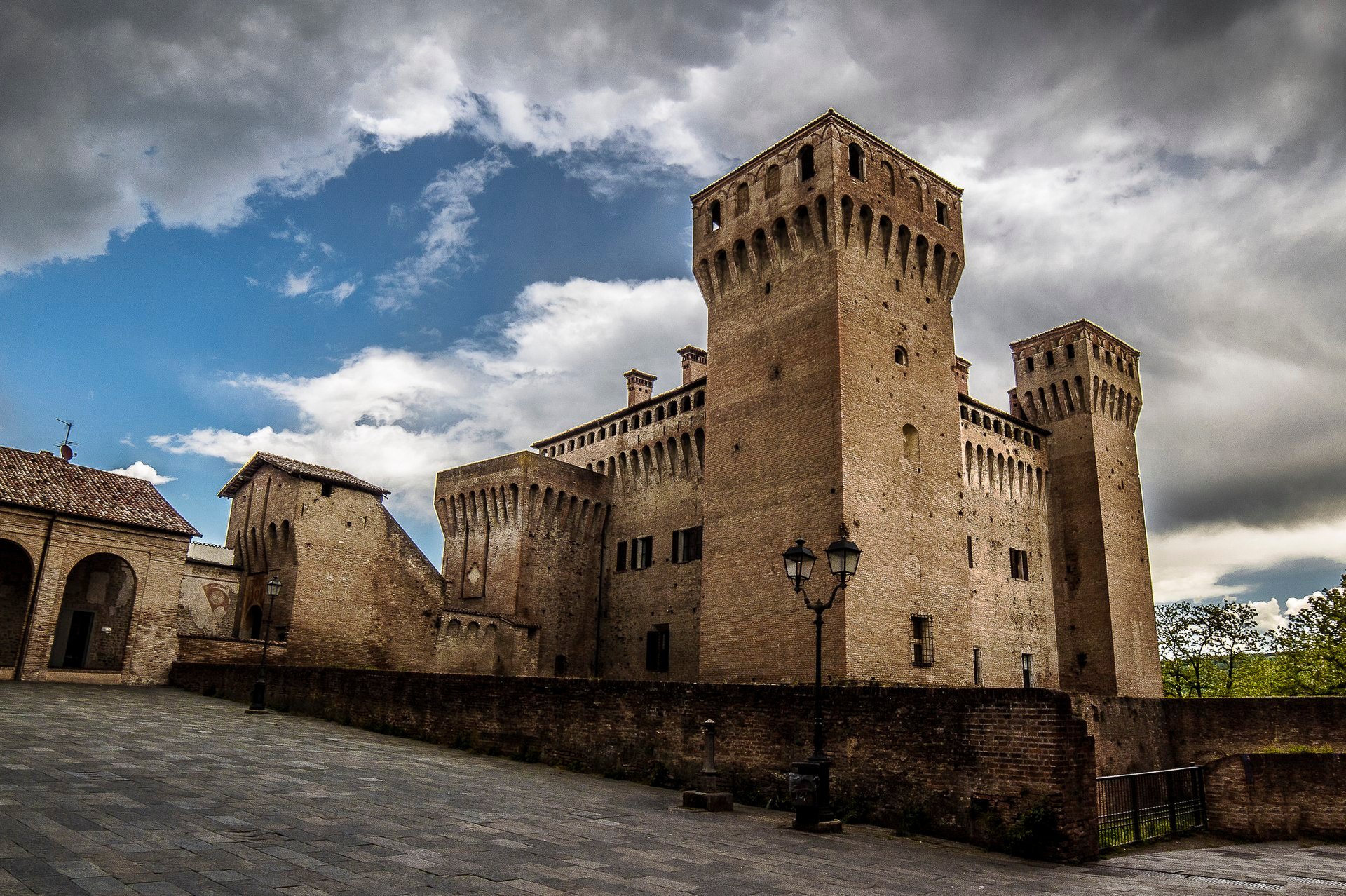
Fortress of Vignola (MO) | Ph. Angelo Nacchio
9 - LEVIZZANO RANGONE CASTLE
Levizzano Castle stands in a fabulous hilly landscape not far from the delightful village of Castelvetro.
In the late 9th century, it was a simple fortified settlement. The ring of walls enclosed Matilda’s Tower and a chapel to saints Adalbert and Anthony to the south, now deconsecrated.
From the 12th century, the complex was restored and extended. In particular, alongside the castle gate tower, the feudal palace was erected (and later enlarged) to replace Matilda’s Tower as the noble residence. Probably around the same time, the palace and the tower were linked by a tunnel.
The residential complex was further extended in the 16th century to add the Bishops’ Rooms with their original wood ceiling and Renaissance fresco cycle.
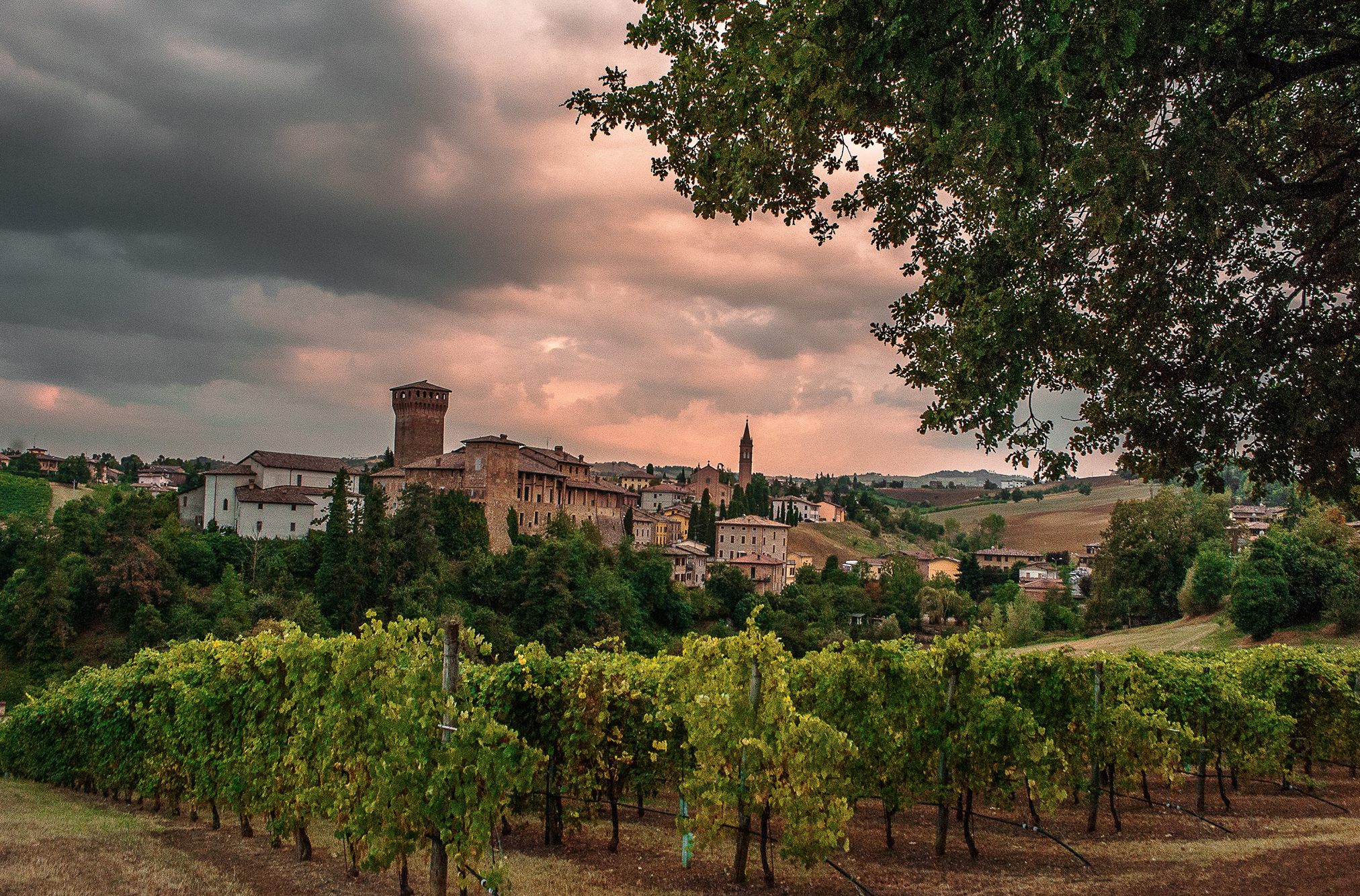
Castle of Levizzano Rangone (MO) | Ph Angelo Nacchio
10 - SPEZZANO CASTLE
Spezzano Castle is a mediaeval delight. The moat, drawbridge and battlements date from the 13th and 14th centuries, and the pentagonal tower alludes to its former defensive role.
In 1529, the owners – the Pio family from Carpi – began to turn the castle into a noble residence. Its hub is the superb Renaissance arched courtyard, the majestic Room of Views and the Battles Gallery, where intricate frescoes depict the major 16th-century clashes featuring Alfonso I d’Este and the Pio family’s military contingent.
In 1982, Fiorano town council bought and renovated the castle. It now houses the Municipal Vinegar Cellar, in the pentagonal tower, and the Ceramics Museum – which tells the story of ceramics production in the area from the Stone Age to the present day.
The building is set in a 19th-century park of romantic conception complete with picnic area, while a cycleway-cum-footpath links the castle with Salse di Nirano Nature Reserve.
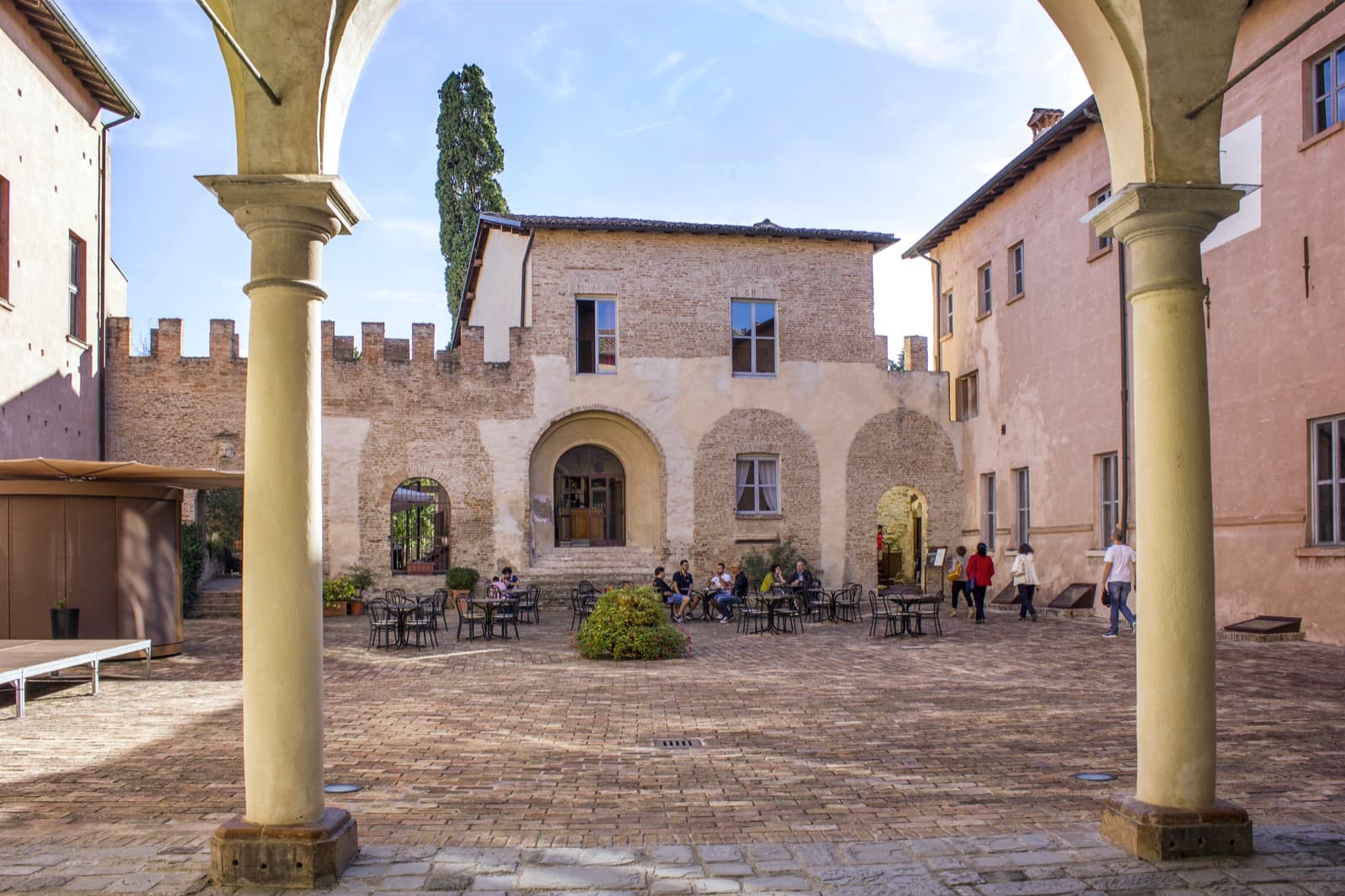
Spezzano Castle, Fiorano (MO) | Ph. ovikovi
11 - MONTEGIBBIO CASTLE
Montegibbio Castle stands atop one of the hills around Sassuolo, about 3 miles from town. Amid the lovely undulating fields, an English-style romantic garden embraces one of the most attractive mediaeval castles in Modena province.
Elliptical like the hill itself, the earliest fortifications here on the Mons Gibulus date probably from the early 10th century, the days of the Hungarian raids. The castle was subsumed into the huge domain of Boniface of Tuscany and his daughter Matilda. It became part of a triple ring of castles in the Modena and Reggio hills that defended the Canossa lands and the local road arteries.
In the early 14th century, Montegibbio was held by the Della Rosa family, Guelph lords of Sassuolo, who used the castle to defend their fiefdom from the expansionist threat of the Ghibelline governor of Modena, Passerino Bonaccolsi. The castle was fought over for years by the Bonaccolsi, Della Rosa and Este families, before the Estes took control of the Sassuolo area in the early 15th century.
Ceded along with the surrounding lands to Giberto Pio of Savoy in 1499, the castle was abandoned after the earthquake of 1501. The Boschetti family took ownership in 1636, rebuilding the ruins as a marquess’ palace and giving St Peter’s church next door a Baroque makeover. The castle continued to change hands until it was acquired in 1851 by the Borsaris, who extended it and renovated the interiors in eclectic style, creating the garden we see today.
You can now visit the garden, the courtyard (a prime location for summer cultural soirées and private events) and the municipal vinegar cellar (do book first). The palace is usually closed to the public.
12 - GUIGLIA CASTLE
Guiglia Castle is a fine, imposing 14th-century fort that stands out for miles around. It forms the heart of an attractive walled village with commanding views over the sweeping River Panaro plain – hence the moniker “the Balcony of Emilia”.
After Matilda of Tuscany’s death in 1115, the castle passed into the hands of the Guiglia lords and, after various vicissitudes, to the House of Este in 1404. They granted it as a fiefdom to the Montecuccoli family, who redeveloped it as a residence – as the entrance loggia’s fine stucco decorations confirm.
The castle includes the square clock tower, formerly known as the public tower. The bell is dated 1535, while the village church is from 1474 with 19th-century refacing.
The castle also lies within Sassi di Roccamalatina Regional Park, a lovely nature reserve that definitely merits a visit.
13 - MONTECUCCOLO CASTLE
Crowning the hill above Pavullo, Montecuccolo Castle dominates the entire Frignano valley. It is the heart of a lookout network, and some nearby towers – in Lavacchio, Gaiato and Torricella – still exist.
A 12th-century structure, the castle tower looms large over the inner courtyard. The castle comprises a whole complex of buildings from different eras, the oldest (the “palazzo vecchio”) having collapsed in the 19th century. The old block was extended with a north and a south wing, surrounded by a second ring of walls. After the tower at the southern tip was raised, the whole upper keep was wrapped in a third blanket of walling.
During the 16th century, the various parts were united as the central hub was built. On 21 February 1609, the castle became the birthplace of Raimondo Montecuccoli, military strategist of European renown and a great writer on the art of war. He is considered Europe’s saviour as the commander of the Holy Roman imperial armies during the victory over the Turks in Hungary (1664).
The castle was partially destroyed by the French in 1799, but the whole complex has recently been fully restored for visitors to savour the atmosphere of centuries past.
There are numerous exhibits to enjoy, with the collected works of Raffaele Biolchini, the cycle “A home town rediscovered” by Pavullo painter Gino Covili and Frignano Natural History Museum, with interactive displays to evoke the Apennine setting and the wildlife of Frignano Park.
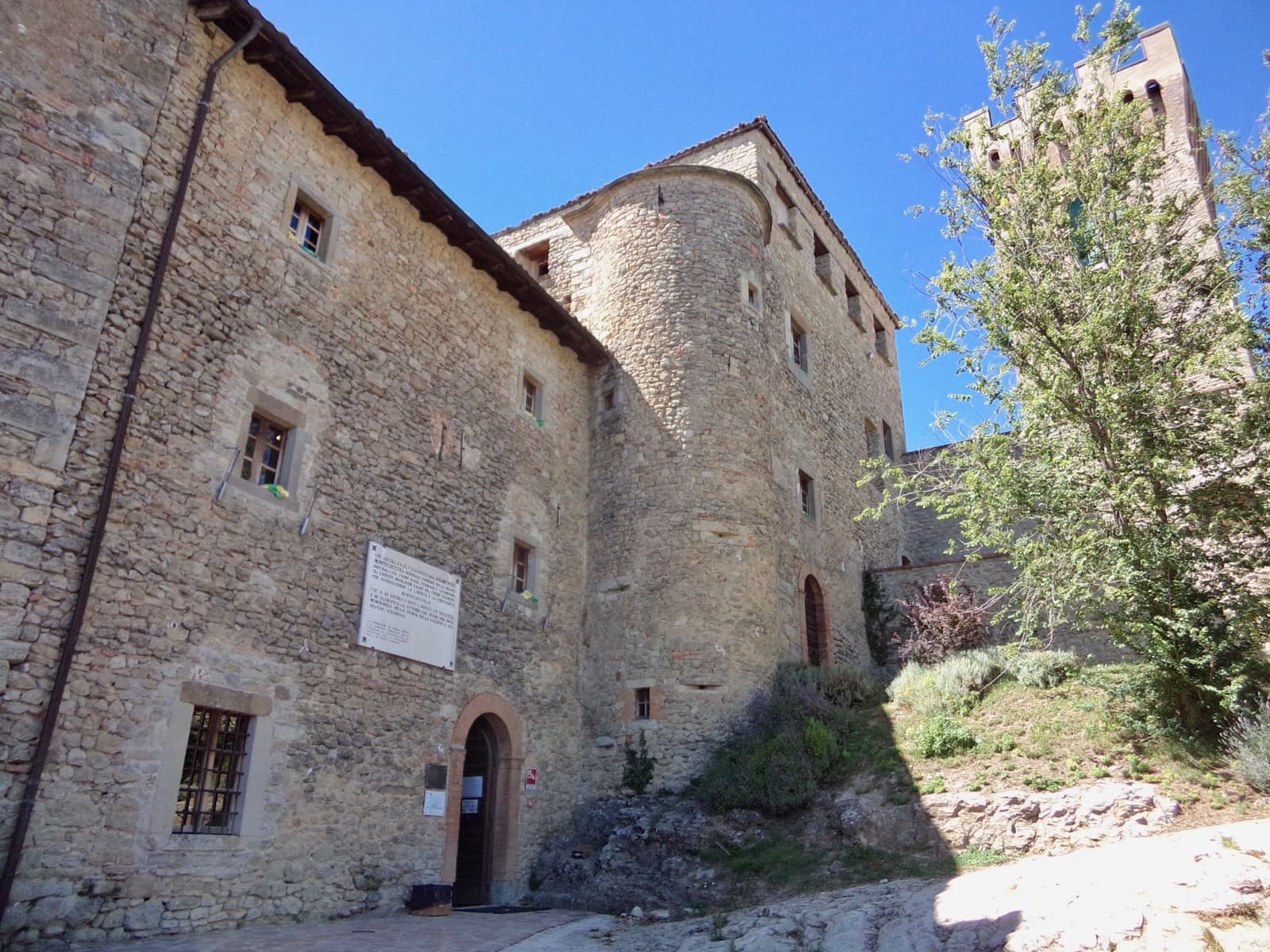
Montecuccolo Castle, Pavullo (MO) | Ph. mgmar79
14 - MONTEFIORINO CASTLE
Built on a rocky spur 797 metres above sea level, Montefiorino Castle enjoys a dominant position over the Dolo and Dragone river valleys. For centuries, it was a bastion defending the surrounding lands and the communication links to the Apennine passes.
The village was on a major route over 2000 years ago, which was modernised and extended by the Romans before becoming one of the main roads to Tuscany in the Middle Ages: the Via Bibulca (as the name implies, it was wide enough for two yoked oxen to pass at the same time).
In 1160, the Montefiorino area became a Montecuccoli fiefdom, and the family fortified it in 1170 by erecting a stout four-sided tower on the hilltop. Between 1235 and 1239, a new Castle was built around it. It remained in the family until 1429, when the local people rebelled and won the protection of Nicolò III d’Este, who also released them from their old feudal obligations.
In 1944, the castle was the seat of the democratic government of the Republic of Montefiorino, the first area of northern Italy to be liberated by the partisan forces. This historic moment is commemorated in the Museum of the Partisan Republic of Montefiorino, housed in the castle.
15 - SESTOLA CASTLE
Sestola Castle dates back to 753, Lombard-Byzantine times, when Astolfo gave it to his brother-in-law Anselmo, the founder of Nonantola abbey.
The impressive mediaeval fortress surveys the town of Sestola and the Leo and Scoltenna river valleys from its rocky crag – the Dukes of Este’s most important outpost in the Frignano area. Built as a military stronghold, for four centuries it was the seat of the Governor of Frignano province during the Este dominion. Also used as a prison, it became an orphanage in the 19th century and then a weather observatory.
In the mid 20th century, the council bought and restored the entire complex. The building is now permanently open to the public, not least as home to the Museum of Mountain Civilisation and the Museum of Mechanical Musical Instruments. The summer cultural programme is varied and interesting.
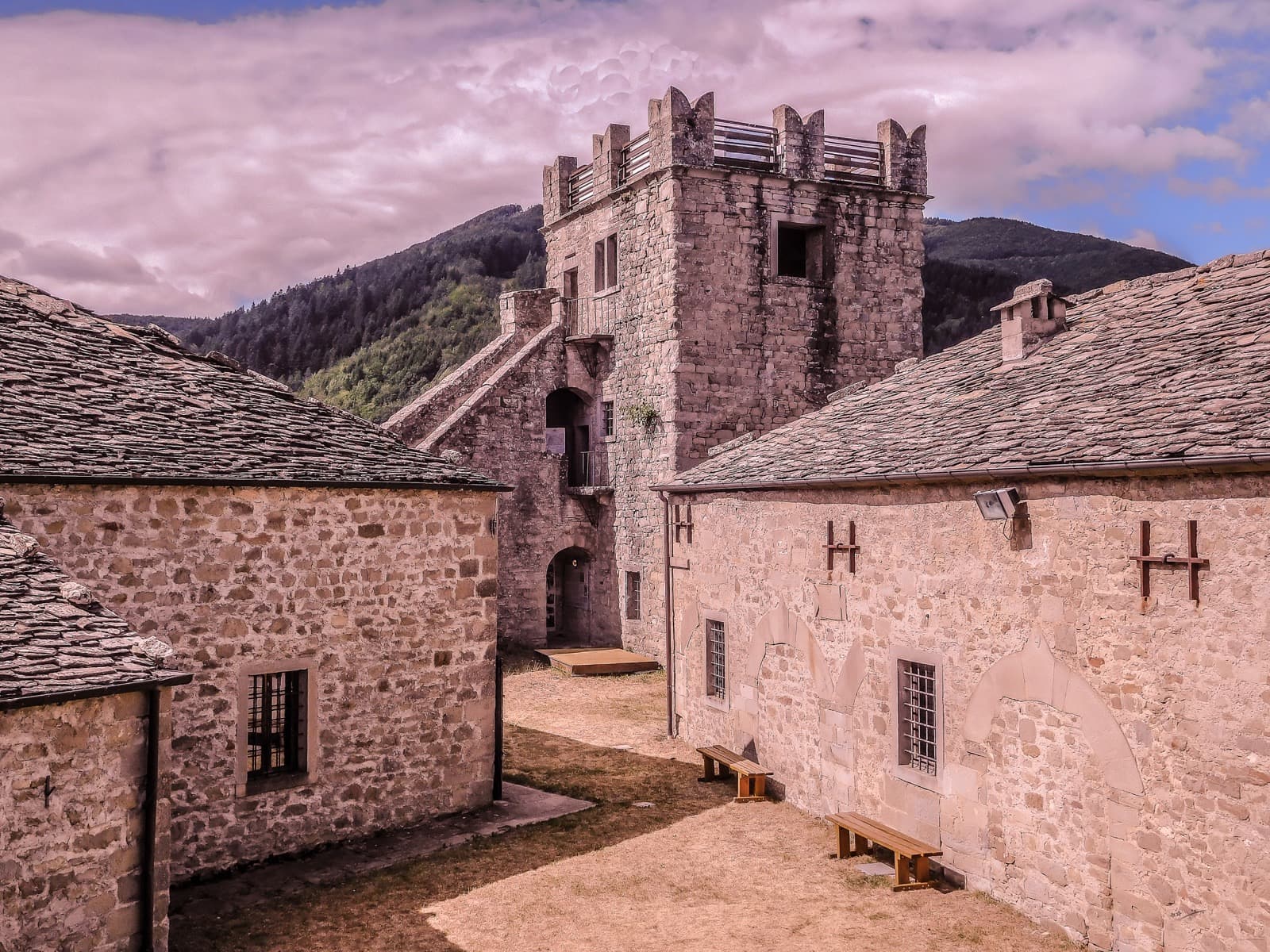
Castle of Sestola (MO) | Ph. Luca Nacchio
16 - ROCCAPELAGO CASTLE
Towering on a rocky outcrop over 1000 m above sea level, the doughty Roccapelago Castle surveys the Pelago river basin and the old roads from the Po valley to Tuscany and the Tyrrhenian Sea. The crag is reputed to be a prehistoric settlement, although the first documentary evidence of a “Castrum Pelago” is from 753.
It was owned by the Lombards, Matilda of Tuscany and (from 1240) the Montegarullo lords, feeling the impact of the military policy of Obizzo da Montegarullo, in particular. In 1393, during Obizzo’s rebellion against the Estensi, Roccapelago was besieged and fell to the city of Lucca, d’Este allies. Three years later, Obizzo retook Roccapelago and held it until 1408, when a powerful army under Uguccione dei Contrari captured it and took him to Ferrara as a prisoner.
A new church was built in 1586 within the walls of the by now abandoned castle; the church bells were later hung in one of the old towers. Earthquake damage was repaired in 1925, while in 2011 the crypt was the site of a surprising discovery: a burial site with over 300 corpses (nearly 100 mummified) interred between the 16th and 18th centuries. The mummies and funerary paraphernalia are now on display in the Castle museum.
Author
You may also like
5 Castles not to be missed in the Lands of Matilde di Canossa
by Elisa Mazzini /// February 13, 2020
8 unmissable Castles in the lands of Guidi and Malatesta
by Walter Manni /// April 13, 2018

Interested in our newsletter?
Every first of the month, an email (in Italian) with selected contents and upcoming events.
Castles with ghosts in Italy – a thrilling experience in Emilia Romagna
by Elisa Mazzini /// October 22, 2020
Discover Emilia Romagna from above – On top of Towers and Bell towers
by Elisa Mazzini /// October 24, 2018
